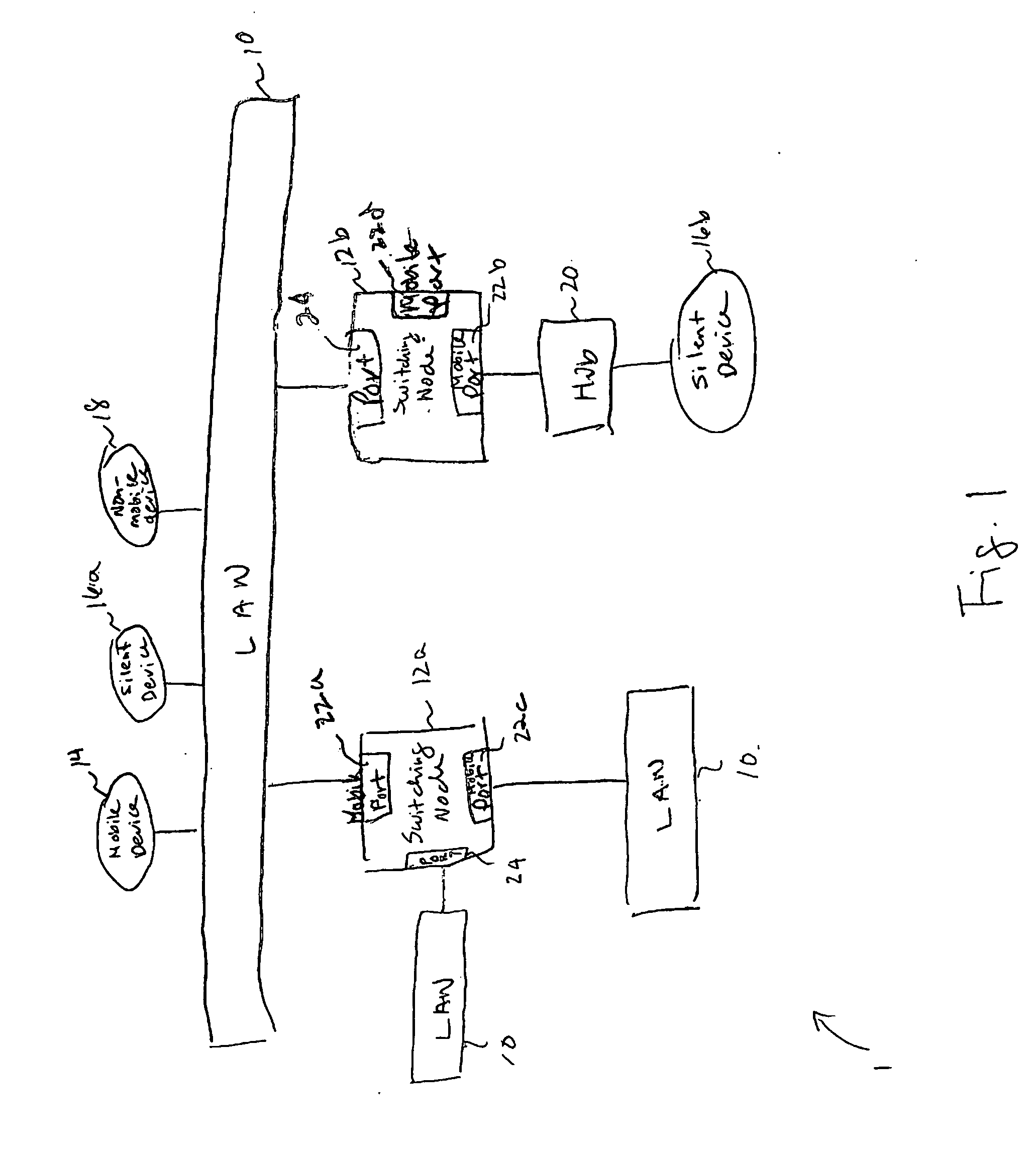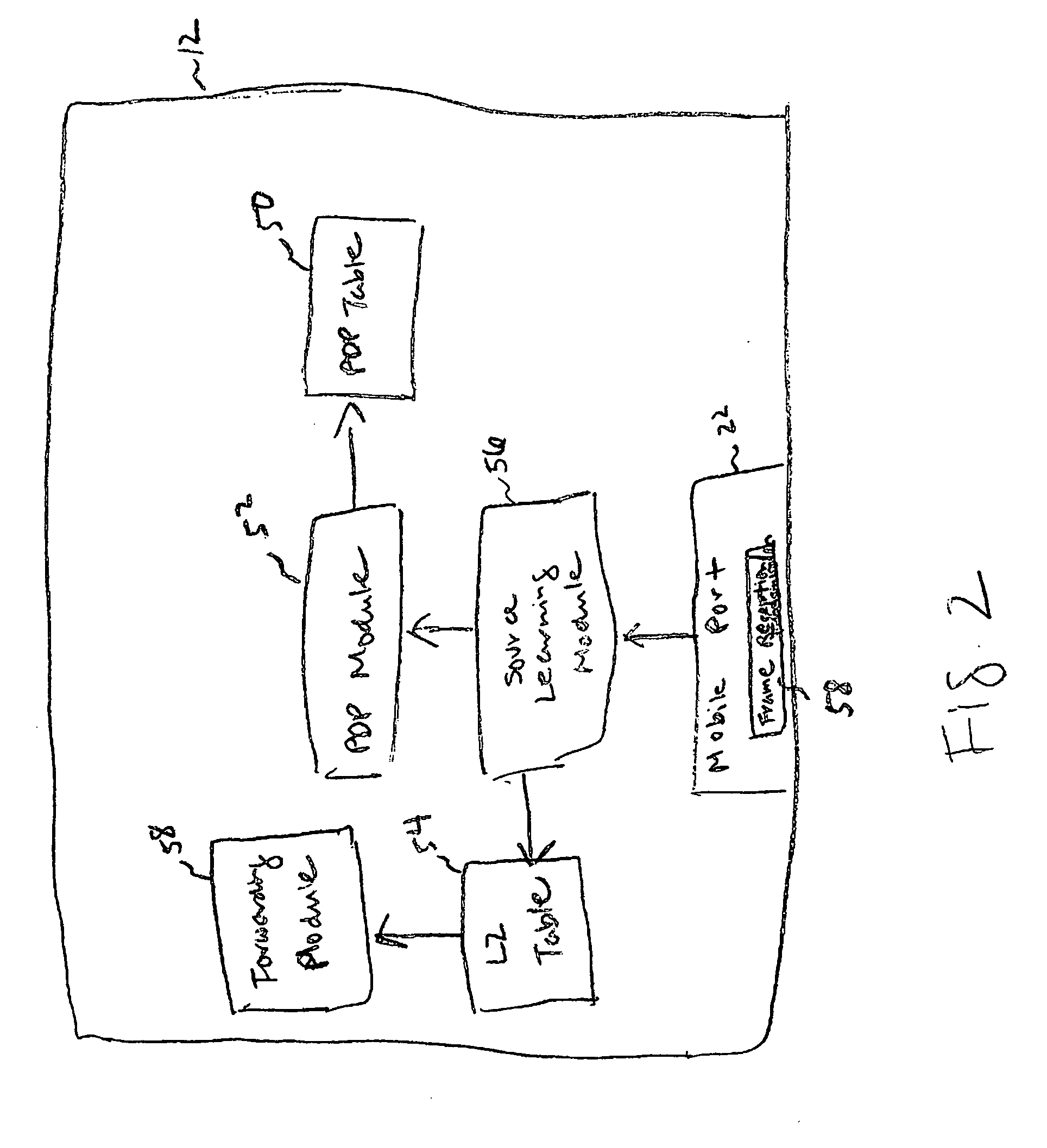Printer discovery protocol system and method
a discovery protocol and discovery protocol technology, applied in the field of virtual local area networks, can solve the problems of not generally transmitting traffic, unreachable to other devices, and mobile devices that are silent,
- Summary
- Abstract
- Description
- Claims
- Application Information
AI Technical Summary
Benefits of technology
Problems solved by technology
Method used
Image
Examples
Embodiment Construction
[0021]FIG. 1 is a schematic block diagram of a virtual bridged LAN 1 according to one embodiment of the invention. The virtual bridged LAN 1 includes one or more LANs 10a, 10b, hubs 20, and edge devices 16a, 16b, 18 interconnected to each other via a switching node 12. The switching node 12 may be, for example, a virtual local area network (VLAN) MAC bridge such as, for example, a VLAN MAC bridge as described in IEEE 802.1Q and 802.1V. Exemplary VLAN MAC bridges are sold by Alcatel under the trademark Omniswitch.
[0022] In the illustrated embodiment, the switching node 12 includes one or more mobile ports 22a, 22b, and 22c (collectively referenced at 22) and one or more non-mobile ports 24a, 24b, 24c (collectively referenced at 24). The non-mobile ports 24 may be either tagged or untagged as is described in further detail in IEEE 802.1Q. Generally, if the non-mobile ports 24 are untagged, they are assigned a default VLAN for switching untagged traffic. If the non-mobile ports 24 are...
PUM
 Login to View More
Login to View More Abstract
Description
Claims
Application Information
 Login to View More
Login to View More - R&D
- Intellectual Property
- Life Sciences
- Materials
- Tech Scout
- Unparalleled Data Quality
- Higher Quality Content
- 60% Fewer Hallucinations
Browse by: Latest US Patents, China's latest patents, Technical Efficacy Thesaurus, Application Domain, Technology Topic, Popular Technical Reports.
© 2025 PatSnap. All rights reserved.Legal|Privacy policy|Modern Slavery Act Transparency Statement|Sitemap|About US| Contact US: help@patsnap.com



